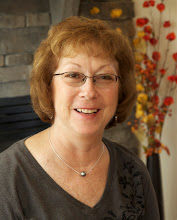Wednesday, October 14
After devotions we went to an organization called Badil, who works primarily with the refugee camps. There are four in Bethlehem alone, but I only visited 2, Deheisha and Aida. We listened to Hasem speak concerning the history of the refugees which was very informative and interesting. Prior to this session we heard bites and pieces of the history but not explained in an organized manner. Briefly, in the 1800’s Europe felt they needed to address the “Jewish problem” and felt they had two options of response. One, they could try to hide the Jewish race, or two, they could respond with a revolutionary response, which is what they chose. This resulted in oppression and racism. In 1897 Theodore Herzel had the first Zionist conference to organize the framework for a Jewish state which in itself was not what has developed today. The Jewish National Fund was established, which still functions today, to acquiesce funds to purchase land in Palestine. Eventually the money was used to just confiscate the land and fund Jewish people coming and living in the land. Then and now they take care of all paper work; supply housing, jobs, plane tickets, stipend and pay a large percentage of any money still due on existing mortgage or lease. The Palestinians realized what was happening and together agreed not to sell any land to any Jew or anyone representing the Jews. So land confiscation started by the wars and actually throwing the Palestinians off their lands and killing them. Christian Zionism came into existence and today is more about politics then Christianity. The goal of Zionism then and now is “take control of maximum land under Jewish control with minimum number of Palestinians.” The slogan of Herzel and the Zionist was “a land without a people for a people without a land”. They failed to recognize the many thousands of Palestinian people who have been here for over 2000 years. It is no different today. If you can prove you have any Jewish heritage according to the requirements you are automatically a national and can come to live in Israel or the West Bank and have Israeli citizenship. During the war of 1947 five Palestinian cities and over 530 villages were completely destroyed and the residents were either murdered or displaced. They were placed in refugee camps in tents. Years later the UN built concrete shelters, 3 meters by 3 meters, where 5-10 people were housed. I saw an example of this on our tour of the camp. It was not until the 70’s that they were permitted to build more permanent housing. However, the ground size land has not increased so the housing is only permitted to go up. Today there are many towns and villages in Palestinian land that are not “recognized” by the Israelis so no infrastructure is permitted; no water, no electricity, no sewage or anything else needed to provide a sustainable community. There are over 75,000 now living within these restrictions. Any building structures in these villages can be demolished at any time. A tent or tarp is considered a structure. Every day there are homes demolished leaving the Palestinian people without shelter. As of today there are 1064 homes on the list for demolition in East Jerusalem and the West Bank. These families include many children and elderly. They live in constant fear of loosing their homes, lands and lives. Yet, maybe only meters away there is an illegal settlement with all the infrastructure plus swimming pools and green grass. Answer this question for yourself, “Who lives with the greater fear?”
After the session we took a walking tour of the Deheisha Refugee came which now houses approximately 14,000 people within a 1.5 sq. km area or 1,640 sq yards. This is the same as in 1947. You ask, “Why can’t they move out of the camp?” Where would they go? Financially they are not able to leave as the employment is 25% and housing is limited. But the camp is very clean and they are proud of what they have so there is no crime rate within the camp as they protect each other as well as their property. When they came to the camp the villages stayed together in blocks and continue to live this way. Deheisha camp is made up of 23 different destroyed or confiscated villages. There are 1,300 children with 30 teachers in the school.
In the afternoon we were free to visit Bethlehem. Since I had been there numerous times and would be visiting again over the next month the leader and I went to a café for something to drink and talk. It was very relaxing and enjoyable.
Tuesday, November 10, 2009
Subscribe to:
Post Comments (Atom)


No comments:
Post a Comment